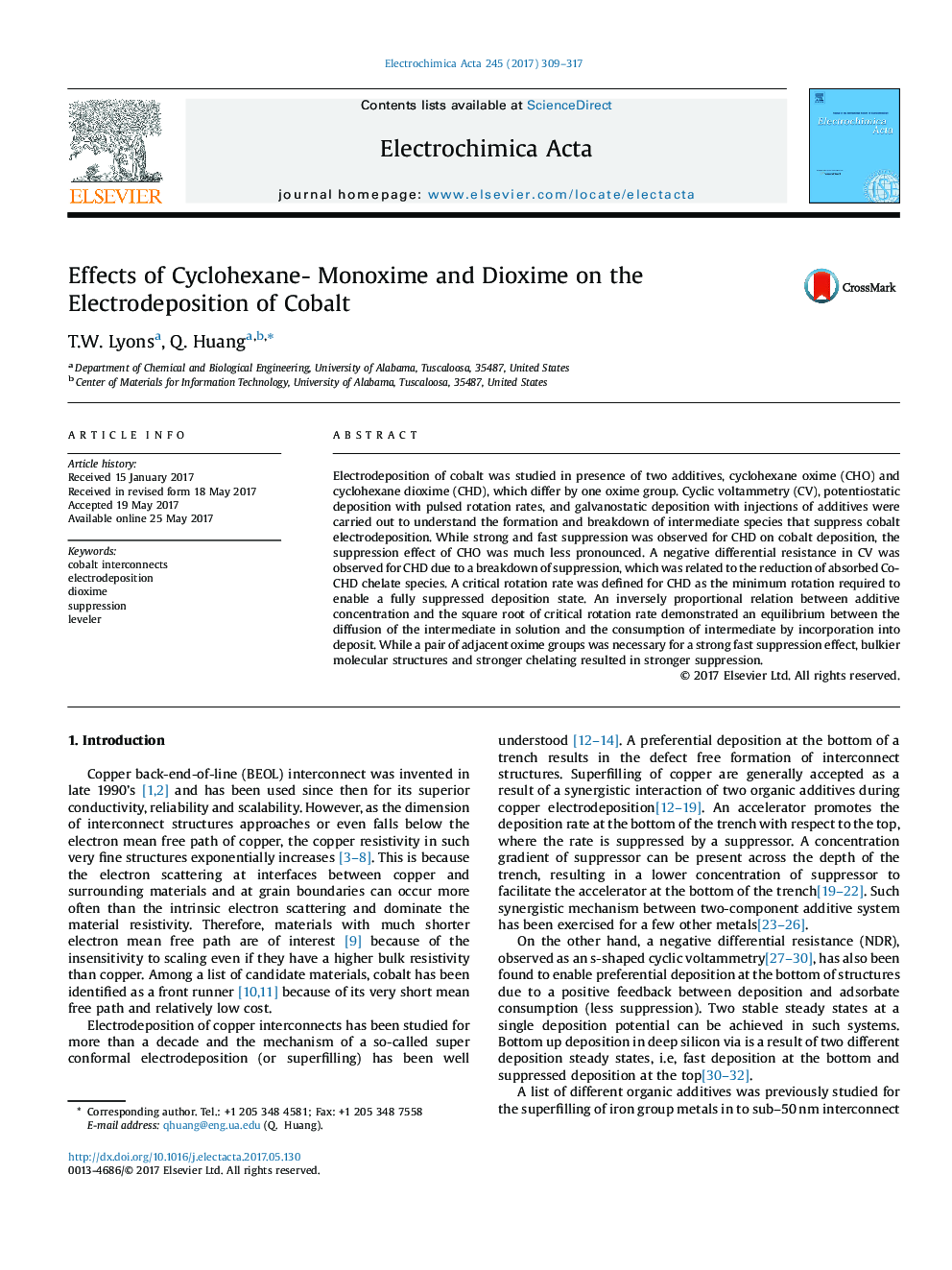| کد مقاله | کد نشریه | سال انتشار | مقاله انگلیسی | نسخه تمام متن |
|---|---|---|---|---|
| 6470716 | 1424112 | 2017 | 9 صفحه PDF | دانلود رایگان |
- Electrodeposition of cobalt is significantly suppressed by cyclohexane dioxime.
- Adsorbed intermediate chelate species were proposed to be involved in the suppression.
- Diffusion of chelates in electrolyte is in equilibrium with the consumption of the adsorbate.
- The presence of a pair of adjacent oxime groups is necessary for a strong and fast suppression.
- Bulky molecular structure and strong coordination with Co2+ are beneficial for suppression.
Electrodeposition of cobalt was studied in presence of two additives, cyclohexane oxime (CHO) and cyclohexane dioxime (CHD), which differ by one oxime group. Cyclic voltammetry (CV), potentiostatic deposition with pulsed rotation rates, and galvanostatic deposition with injections of additives were carried out to understand the formation and breakdown of intermediate species that suppress cobalt electrodeposition. While strong and fast suppression was observed for CHD on cobalt deposition, the suppression effect of CHO was much less pronounced. A negative differential resistance in CV was observed for CHD due to a breakdown of suppression, which was related to the reduction of absorbed Co-CHD chelate species. A critical rotation rate was defined for CHD as the minimum rotation required to enable a fully suppressed deposition state. An inversely proportional relation between additive concentration and the square root of critical rotation rate demonstrated an equilibrium between the diffusion of the intermediate in solution and the consumption of intermediate by incorporation into deposit. While a pair of adjacent oxime groups was necessary for a strong fast suppression effect, bulkier molecular structures and stronger chelating resulted in stronger suppression.
149
Journal: Electrochimica Acta - Volume 245, 10 August 2017, Pages 309-317
